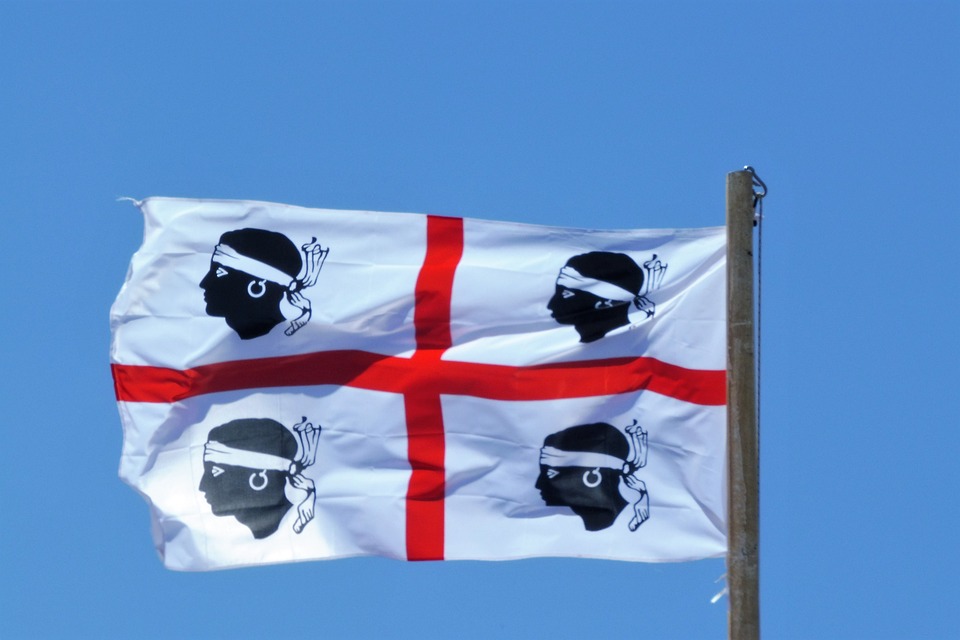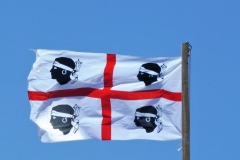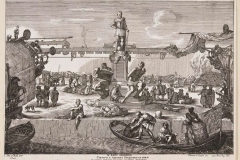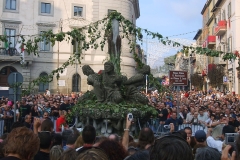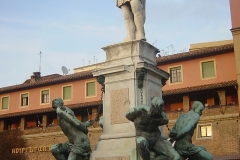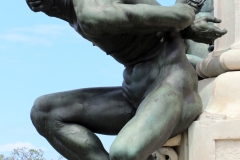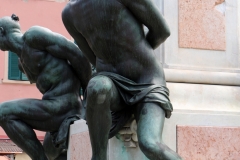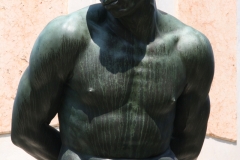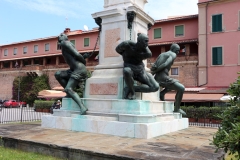LOVE, TRUTH, PEACE, FREEDOM AND JUSTICE
The Four Moors The Quattro Mori
in this article from https://usslave.blogspot.com- Of Livorno, Italy’s most famous landmarks is a monument located near the Port of Livorno. This work of art, which dates back to the Renaissance period, is called “Monumento dei quattro mori” (Monument of the Four Moors). This powerful monument, depicting four Moors, was dedicated to Grand Duke Ferdinando I at the end of the XVI century the works for the realization of the new fortified city of Livorno started.

In order to celebrate this enterprise and the triumphs of the Order of the knights of Santo Stefano against barbaric pirates, Ferdinando de’Medici erected a monument in his honor. The statue of the Granduca was commissioned to the sculptor Giovanni Bandini, than realized it in Carrara in 1595; it was moved to Livorno in 1601. Subsequently, in 1621 Pietro Tacca completed the monument with the four chained Moors, that the sculptor made between 1623 and 1626. The monument is constituted by the Four Moors in bronze at the base of a high pedestal, over which there is the statue of Ferdinando I. The Granduca is represented with the uniform of the Order of the knights of Santo Stefano, the military institution founded in order to fight the Ottomans and the pirates in the Mediterranean Sea. The Four Moors constitute the most important part of the work: the emphasized torsions and the grimaces of pain represent the condition of imprisonment of the subjects, with great realism and elegance. (source: Tuscany Travels)
The Four Moors is the oldest and most popular monument in Leghorn, it symbolizes the winner of Medici against pirates in the Mediterranean Sea.
The monument consist of two parts, one in marble and the other one in bronze. The former, in Carrara marble, shows Ferdinando I dei Medici in the uniform of the Order of the Knights of St. Stephan, a navy establishment to fight the piracy which was an obstacle to free trade and the development of the growning Medicean port. Created by the Florentine sculptor Giovanni Bandini, it was terminated in 1595, but only in 1617 the statue was placed on its pedestal.
The Four Moors, works of considerable merit by the Carrara sculptor Pietro Tacca, a pupil of Giambologna, were added between 1623 and 1626.
In 1861 the statue was moved about 20 mt to its present position. On the occasion it was completely renovated. During the Second World War it was once again dismantled to protect it from aerial bombardments. At the end of the war it was returned to its place. (source: Geocaching)
The Four Moors – a symbol of Livorno Overlooking the old Medici Port, right at the port end of Via Grande, you cannot fail to notice the statue known as I Quattro Mori (‘the four moors’) which is undoubtedly Livorno’s most famous landmark. The monument, which is a symbol of Livorno, was carried out in two stages. The upper part, portraying Ferdinando I, the Medici Grand Duke, was sculpted in marble by Giovanni Bandini by order of Ferdinando’s son, Cosimo II, to honour his father. It was erected in 1617, nine years after Grand Duke Ferdinando’s death.
The four bronze moors were added between 1623 and 1626 and are the work of the Carrara sculptor, Pietro Tacca, who was Giambologna’s greatest pupil. He used two slaves as a model for his work and it is said that in return for posing for several months these two men were then set free.
The younger of the two moved to Florence and started a family there. On holidays he used to bring his family to Livorno so that they could admire his bronze likeness!
The whole monument is supposed to represent Tuscany’s victories over pirate attacks.
Sardinian Flag Quattro Mori